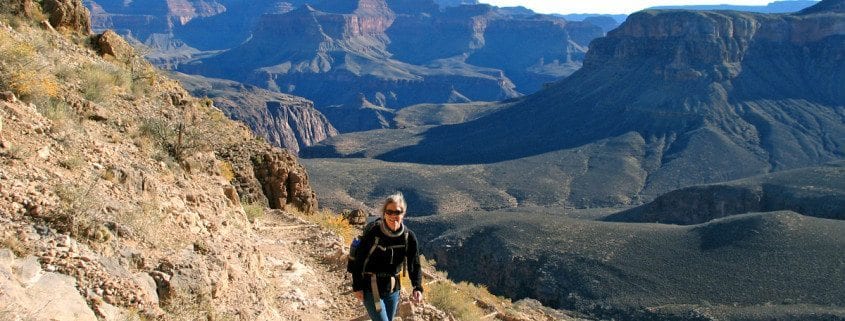Virtual Tours Take Off with New Fitness Game
Virtual Reality (VR) is everywhere. In the last year, virtual reality has evolved from a parlor trick to a truly immersive deception. Blurring the lines of reality through VR is fun. Although, scientists are utilizing the technology craze to help people exercise.
Recently, researchers at the University of Iowa created a game that allows users to go on virtual walking tours. These tours change each week, giving users the virtual experience of walking through iconic areas such as the Grand Canyon.
The Game
MapTrek was created to give an interesting, visually appealing alternative to walking around the common areas of someone’s hometown. The game allows people to virtually travel to faraway places, without ever leaving the safety of their daily routine.
By using a Google Maps on a mobile device and a Fitbit, a personalized avatar moves across the screen. This avatar advances through the Grand Canyon, or the Appalachian Trail, with every step the person takes. At any time, the user can click on the screen to see where ‘they’ are in real time.
The Success
To test this theory, the researchers used two groups. One group was given the game and a Fitbit while the other group was only given the Fitbit. When the results were in, the group that received the game walked an average of 2,200 more steps per day than the people who were just given the Fitbit. (That’s close to a mile more walking per day.
That led the team of researchers to conclude that people who were having more fun were walking more. If this trend continues, this could lead to a significantly healthier lifestyle.
In summation, this study supports the idea that with the aid of Virtual Reality, people can adopt a healthier lifestyle. Plus, for people who want to explore the Grand Canyon and other iconic destinations, VR is the next best thing. It can get people acquainted with the landscape before their trip or pose as a secondary experience for those who cannot get there any other way. Regardless of how the game is used, though, if it’s helping people get more exercise, that’s a win.

 Photo by Steele Wotkyns
Photo by Steele Wotkyns